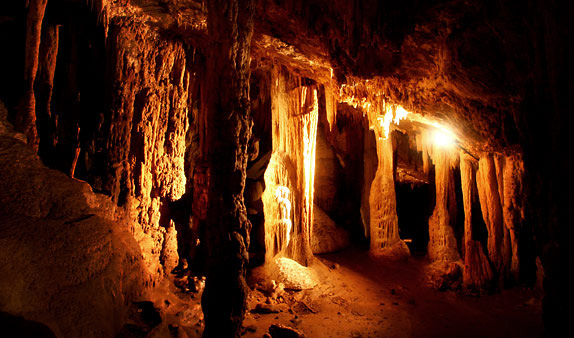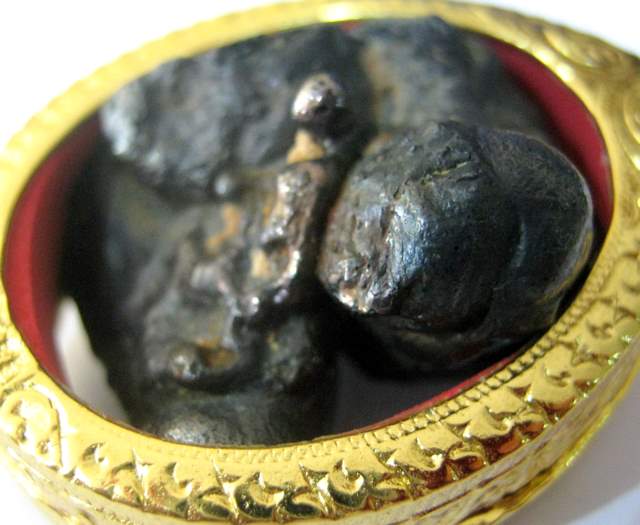Lek Lai Tham – Lek Lai Kaya Siddhi from a Holy Cave

If there is any form of Lek Lai, or place where it is said that real Lek Lai should be found, it is the Cave. Before the Public Interest in Lek Lai began some years ago, Lek Lai was almost always assumed to come from caves in mountain forests. It is said that Lek Lai of the type found in caves can be stretched when heated, and coaxed into different forms.

This is done by anointing (bathing) the piece of Lek Lai in honey as it is still in its raw Mineral form, and then heating it under a powerful flame, until the Lek Lai hidden within it liquifies and runs out of the stone, to come and eat the honey.
The Lek Lai is coaxed into dripping down in a thin long line, and then it is cut using a special consecrated cutting instrument, such as a Meed Hmor spirit knife. It is believed that it is not possible for any person to cut Lek Lai, for the Lek Lai is guarded over by the spirits and Devas of the Cave and the Forest, as well as the local Yaksa giants who protect it. In addition, the spirit within the Lek Lai is extremely powerful and can harm the person who tries to cut it.
It is said that the person who cuts the Lek Lai must not only learn the Wicha, but also have gathered enough Merit to be able to approach and cut the Kaya Siddhi. Whoever is lucky enough to receive the protection of Lek Lai, will be impossible to harm or kill with bullets, knives or other sharp instruments, and even explosions.
Gunpowder or other such explosive materials can not come close to a piece of Lek Lai and are repelled by its Adamantine Nature. In addition, Lek Lai protects from poisonous animals such as Mambas, Cobras and the like.
Three types of Extract
Lek Lai Tham is extracted and produced in three different forms, or states
1. Lek Lai (Pure Lek Lai) – this can be stretched and liquified under flame, and possesses extreme power.
2. Rang Lek Lai (Lek Lai nest) – This part of the extract is not as shiny and reflective as pure Lek Lai. It can not be melted or stretched under flame. It is the part which covers the Lek Lai on the wall of the cave like a shell, and is tightly stuck on the wall of the cave.
3. Khee Lek Lai (Lek Lai residues) – this part of the Lek Lai looks like dripping candle wax, and is very brittle and can be broken if it recieves a hard blow. This kind of lek Lai, if occurring in large amounts, is said to not be very powerful compared to pure Lek Lai and Rang Lek Lai.
Lek Lai is then given three different classification levels too
1. Lek Lai Nam Neung – top quality types, such as Lek Lai Bpeek Malaeng Tap, Lek Lai Jao Pha, Lek Lay Gotapee, Lek Lai Ngern Yuang, Lek Lai Chee Ba Khaw, Lek Lai Paetch Dam, and Lek Lai Tong Pla Hlai.
2. Lek Lai Nam Rong – medium level power and purity Lek Lai types such as Kote Lek Lai, Rae Koh Larn, Rae Met Makham and Lek Lai Torahod.
3. Khee Lek Lai – the by product, or residue. Often used for making sacred powders as part of the mixture which is then pressed into powder amulets, also used in prayer water, and also placed on its own dais and worshiped on the altar, or carried as a Luck bringer and Protective elemental substance.
